Open shelves are a minimalist’s dream when styled correctly. They offer the perfect balance between functionality and aesthetics, allowing you to display items while keeping things streamlined and clutter-free. However, without careful organization, open shelves can quickly descend into chaos and overwhelm the minimalist look you’re aiming for.
I learned this lesson the hard way when I first installed open shelving in my kitchen. At first, I thought I’d just “wing it” by putting everything I owned on display. Big mistake. It looked more like a yard sale than a curated minimalist haven. After a weekend of rearranging, decluttering, and implementing a few tricks, my open shelves finally matched the minimalist vibe of my home. Now, they’re both functional and visually pleasing—a real win-win!
Ready to organize your open shelves like a pro? Here are the best minimalist tips to get you started.
Why Open Shelves Are Perfect for Minimalist Design
- Encourage Intentionality: You’re forced to be selective about what you display, keeping only the items you love or use often.
- Create Visual Space: Unlike closed cabinets, open shelves make rooms feel lighter and more open.
- Showcase Personality: You can curate a mix of functional items and personal touches for a look that reflects you.
1. Declutter First
Why It Works:
Minimalism is all about less is more. Before organizing, you need to eliminate items that don’t serve a purpose or spark joy.
How to Do It:
- Remove everything from your shelves and sort items into categories: keep, donate, or store elsewhere.
- Ask yourself: Do I use this regularly? Does it add to the aesthetic I’m going for?
- Only keep items that are essential or beautiful.
Pro Tip: Revisit your shelves periodically to ensure they stay clutter-free.
2. Stick to a Cohesive Color Palette
Why It Works:
A unified color scheme creates a calm, cohesive look that feels intentional and visually appealing.
How to Do It:
- Use neutral tones like white, beige, gray, or black for the majority of items.
- Incorporate natural materials like wood or woven textures for warmth.
- Add subtle pops of color with one or two accent tones, such as green plants or muted ceramics.
Pro Tip: Group similar colors together to create visual harmony.
3. Mix Form and Function
Why It Works:
A balance of practical and decorative items keeps shelves both beautiful and useful.
How to Do It:
- Display functional items, like bowls or jars, alongside decorative pieces like vases or books.
- Use attractive containers or baskets to store small essentials while maintaining a clean look.
- Add a personal touch with a framed photo or small piece of art.
Pro Tip: Stick to a 60/40 rule—60% functional items, 40% decorative elements.
4. Play With Height and Scale
Why It Works:
Varying the size and height of items adds visual interest without creating clutter.
How to Do It:
- Use taller items, like vases or stacked books, as anchors on either side of the shelf.
- Fill in gaps with smaller pieces, like candles, jars, or decorative accents.
- Avoid having too many items of the same height, which can make the display feel flat.
Pro Tip: Group items in odd numbers (3 or 5) for a more natural arrangement.
5. Layer for Depth
Why It Works:
Layering adds dimension to your shelves, preventing them from looking one-dimensional or sparse.
How to Do It:
- Place larger items, like framed art or cutting boards, at the back of the shelf.
- Add smaller items, like vases or books, in front of the larger pieces.
- Overlap items slightly to create a curated look.
Pro Tip: Keep the layering subtle to avoid a cluttered appearance.
6. Group Similar Items Together
Why It Works:
Grouping creates a sense of order and makes your shelves feel cohesive.
How to Do It:
- Stack books horizontally or vertically to anchor your display.
- Use matching jars or canisters for pantry staples like flour, sugar, or coffee beans.
- Group similar decor items, like candles or ceramics, for a polished look.
Pro Tip: Leave some negative space around each group to maintain a minimalist vibe.
7. Use Natural Elements
Why It Works:
Natural elements like plants or wood accents add warmth and life to minimalist shelves.
How to Do It:
- Add a small potted plant or a vase of dried flowers for a touch of greenery.
- Incorporate wooden bowls, trays, or cutting boards for an organic feel.
- Use stone or ceramic decor to complement the natural look.
Pro Tip: Choose low-maintenance plants, like succulents or air plants, to keep things simple.
8. Embrace Negative Space
Why It Works:
Leaving empty space on your shelves prevents overcrowding and maintains the minimalist aesthetic.
How to Do It:
- Avoid filling every inch of the shelf—leave gaps between groups of items.
- Limit the number of items on each shelf to 3–5 pieces, depending on the size.
- Step back and evaluate the overall balance to ensure it doesn’t feel too busy.
Pro Tip: Think of negative space as part of the design—it gives the eyes a place to rest.
9. Incorporate Texture
Why It Works:
Adding texture keeps minimalist shelves from looking too sterile or monotonous.
How to Do It:
- Mix materials like glass, metal, wood, and ceramic for variety.
- Use woven baskets or fabric-lined bins for hidden storage.
- Incorporate textured decor, like a clay vase or a linen-wrapped candle.
Pro Tip: Stick to your color palette to ensure the textures feel cohesive.
10. Maintain Regularly
Why It Works:
Minimalist shelves only stay organized with regular upkeep.
How to Do It:
- Dust and clean your shelves weekly to keep them looking fresh.
- Rotate decorative items seasonally for a subtle refresh.
- Periodically assess the contents to ensure everything still serves a purpose.
Pro Tip: Adopt a “one in, one out” rule—if you add something new, remove an old item to keep things balanced.
Picture Gallery
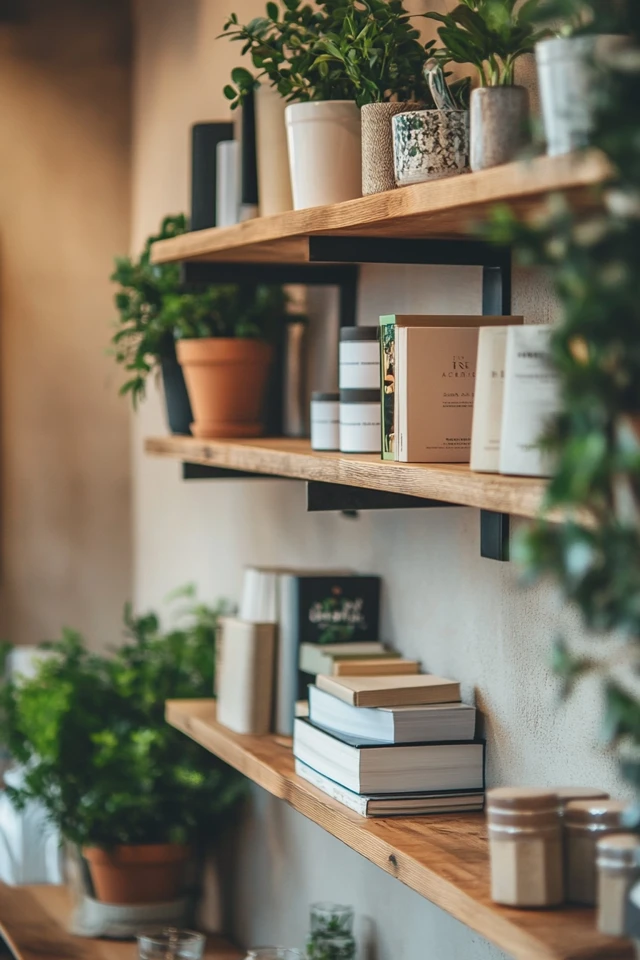
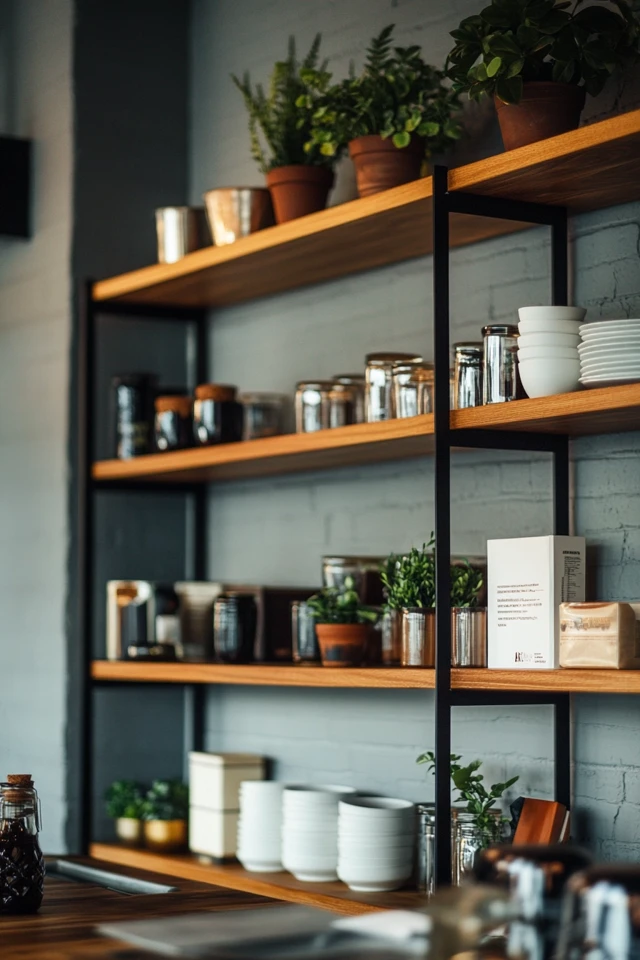
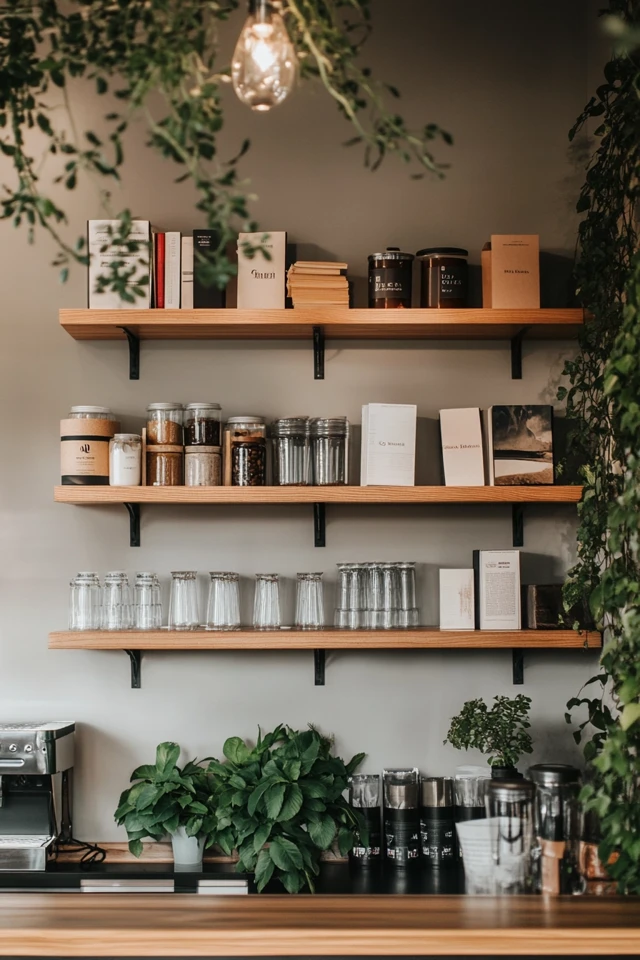
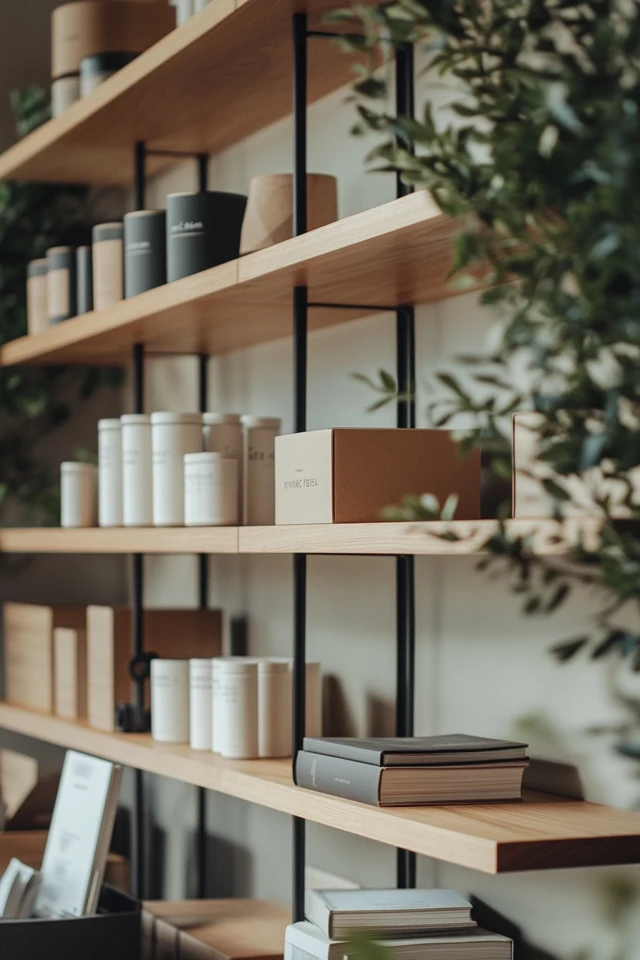
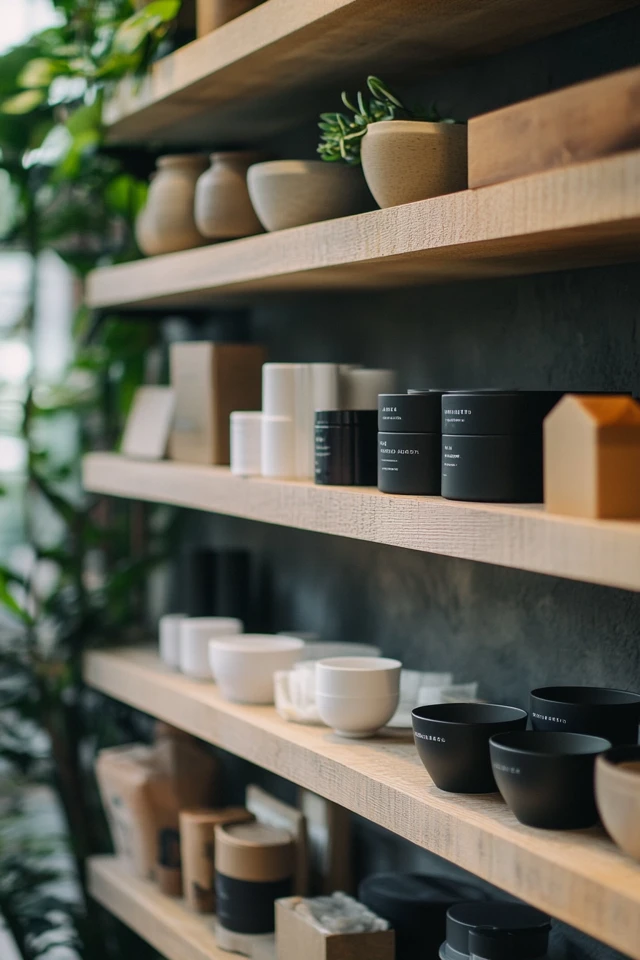
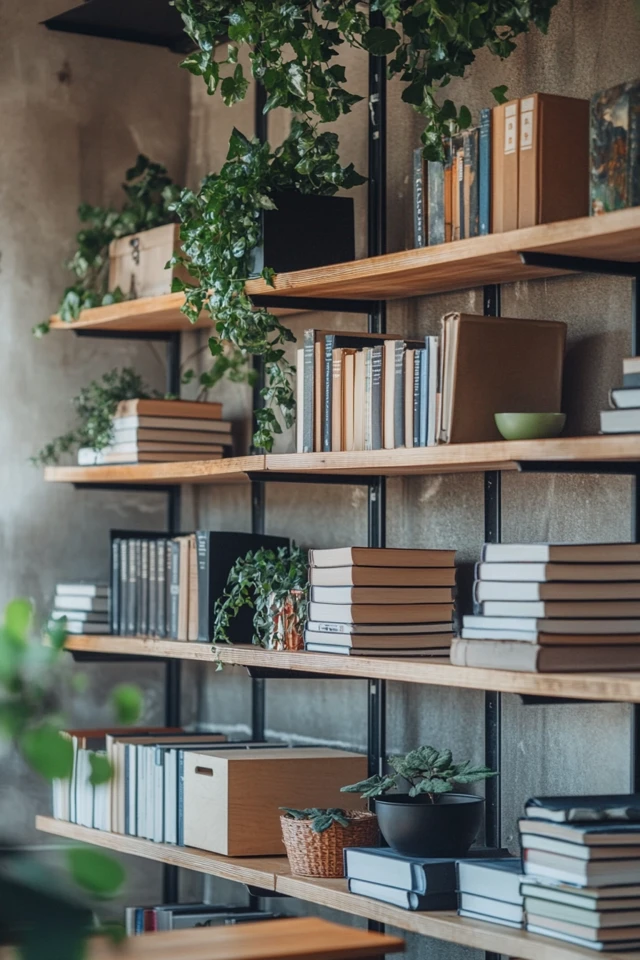
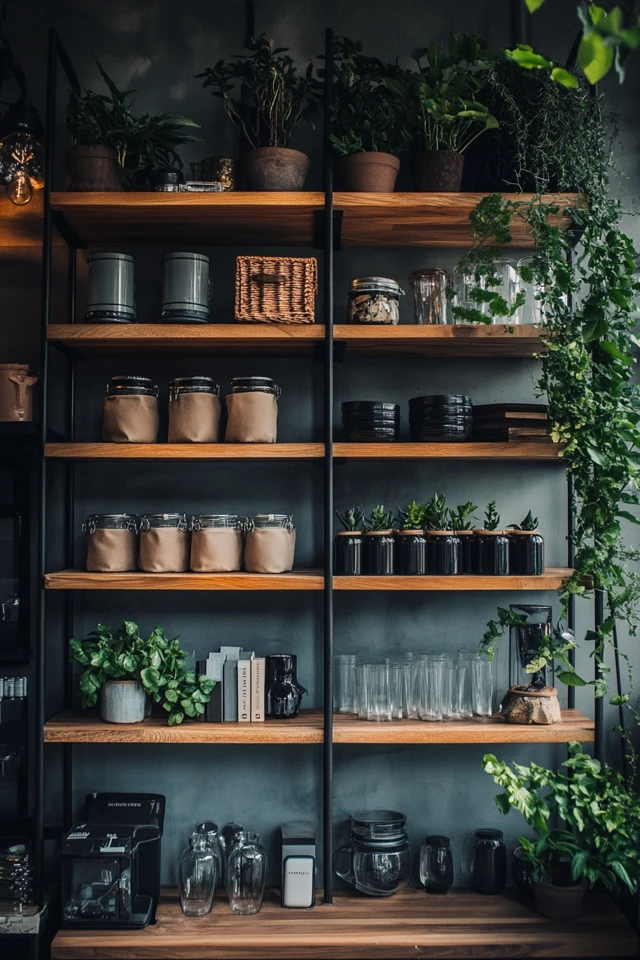
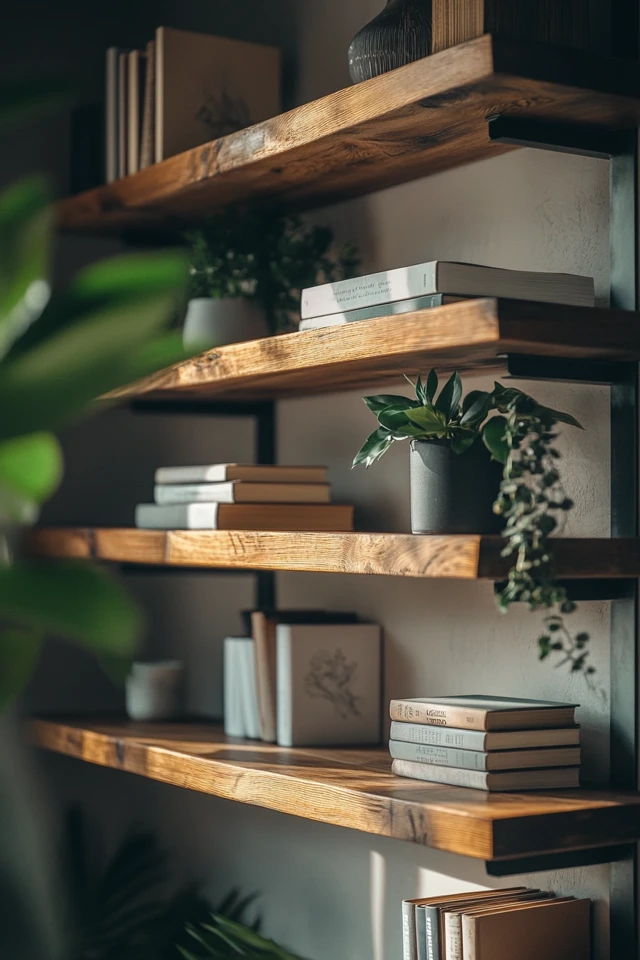
Conclusion
Minimalist open shelves are a beautiful way to display your favorite items while keeping your space functional and organized. By focusing on intentionality, balance, and simplicity, you can turn your shelves into a curated work of art. Remember, the key to minimalist design is less is more—so take your time to style and edit until it feels just right.
Whether you’re organizing kitchen shelves, a living room display, or a home office, these tips will help you create shelves that are as practical as they are stylish. Embrace the power of clean lines, cohesive colors, and carefully chosen items to elevate your minimalist home.
FAQs
1. How do I prevent my open shelves from looking cluttered?
Focus on a few key pieces, stick to a color palette, and leave plenty of negative space to maintain a clean look.
2. What’s the best way to organize books on open shelves?
Arrange books by size or color, and mix vertical stacks with horizontal stacks for variety. Add small decor pieces as bookends.
3. Can I use open shelves in small spaces?
Yes! Open shelves create an airy feel in small spaces, but keep the items minimal and cohesive to avoid overcrowding.
4. How do I make open shelves look intentional?
Stick to a consistent color palette, vary heights and textures, and group items thoughtfully for a curated appearance.
5. What should I avoid when styling open shelves?
Avoid overcrowding, mismatched items, and overly bright colors that disrupt the minimalist aesthetic. Keep it simple and intentional.


